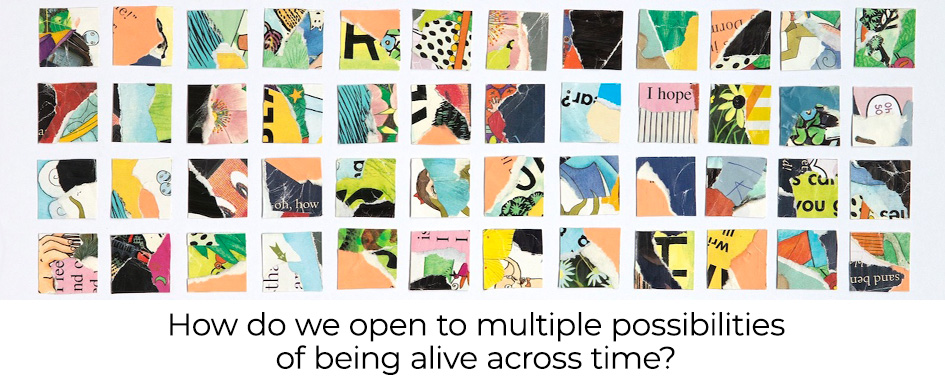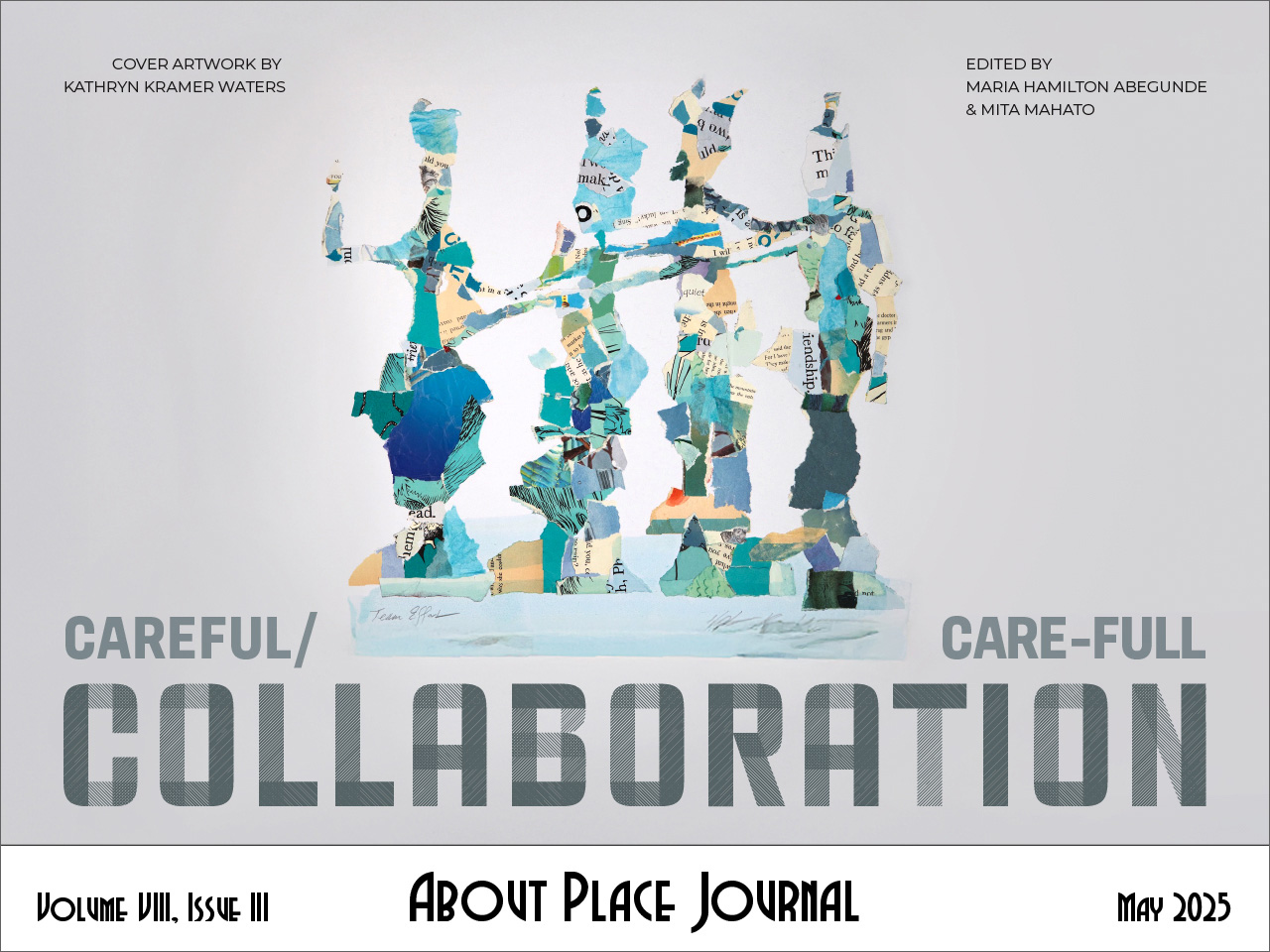How do we open to multiple possibilities of being alive across time?
Time is a messy construct. Words like “ancient,” “antiquity,” “modern,” and “contemporary” frequently not only designate our own proximity to an event or experience, but denote value or relevance to moments in history or the art crafted in a certain period. So much of what I admire in this section is how these artists center care and collaborative practices in efforts that deconstruct the notion of time as a linear project or singular experience. Through this work, we feel so much at once – past and future – now, in this moment. These pieces embrace the messiness of being human in and across many temporalities, reaching in all directions for stories long silenced, for the tender love of family, for pleasure in a cross-species dance or tying one’s shoe.
The scope of these temporal journeys is as varied and inspired as the artists themselves. A daughter communes with a mother she lost at a young age through epistolary meditations arising from artifacts left behind. A community of Igbo women confront centuries of marginalization through the production and wearing of masks in a collaboration which blends both Igbo masquerading traditions and Mexican artisanal practice of alebrije. As two artists weave together the story of a Tuskegee Airman in verse and quilt, time becomes a quilt we might wrap ourselves in, honoring a history and a man through the fibers we touch. A teacher transforms the necessity of tying shoes for her third-grade students into slow, intentional loops of art. Like those shoestrings keeping speedy students safe, time loops and bows; it dangles and comes loose; it drags, leaving traces for us to consider.
We touch time; we think through it; we are embodied in and across it. So often we are told to take our time, as though time is something we can ultimately possess. These pieces reveal our unique ability to be in time(s). This being and embodiment are neither static nor singular. When we offer our care, which is to say our attention, which is to say our love to one another both in and through our art, we embrace not only the multiplicity of ourselves and what our art can be, we honor the deep complexities of time and the opportunity it affords us to connect. How do we open to multiple possibilities of being alive across time? One of the countless ways—together. And through that communion, new futures full of care become possible.
It has been a true pleasure to experience the work that all of the contributors to this issue have created in the spirit of care-full and careful collaboration. The dynamic array of practices and the generosity in which these artistic communities root themselves offer admirable models for engagement and co-creation that will shape how I move forward with others as a writer and editor. I’m also endlessly grateful for the opportunity to share time and space with three phenomenal editors. Abegunde, Mita, and Kate, I’ve learned so much from the kindness, artistry, editorial prowess, and commitment to community each of you embodies. Thank you for being the amazing forces that you are in the world. And to Michael, all my gratitude for your advocacy and support in fostering such an important and necessary space through BEI and APJ.


